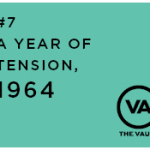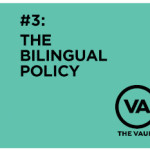The 1980s were an exciting time for Singapore theatre, and English-language drama in particular. In his essay Singapore English Theatre: Dynamic and Diverse, which traces the history of local English-language theatre, Robin Loon called the 80’s the “first golden age of Singapore theatre”, a period which would extend into the following decade.
At the time, Singapore was emerging as a new economic powerhouse, and a young generation of English-educated Singaporeans were ready to create and consume theatre. This was the decade when many of the seeds for today’s scene were planted.
By the 1980s, the country was experiencing high levels of economic growth thanks to an export oriented economic strategy. The blip of the 1985 recession nonwithstanding, Singaporeans enjoyed material affluence and, as the fruit of meticulous state-centered planning, a middle class began to emerge by the mid 1980s. Accompanying this emergence were the emotional stirrings over larger questions of national identity and culture. The English-educated middle class was searching for its soul. It was against the backdrop of these emotional stirrings over national identity that a Singapore English-language theatre was born in the mid-late 1980s.
The Theatre and the State in Singapore: Orthodoxy and resistance by Terence Chong. Routledge, 2011 (p.4).
Here are three trends which defined the 80’s in Singapore theatre.
- 1. The Search for a Singapore Theatre
- 2. Proliferation and Professionalisation of Theatre Groups
- 3. State Support for the Arts
-
1. The Search for a Singapore Theatre
The turning point of Singapore English theatre which heralded this unprecedented activity in 1985 – at a time of economic recession previously unknown in modern Singapore and reducing company sponsorship of the main festival in Singapore – is not something that can be pinned down to one particular event. But chief amongst the many factors must be, I would suggest, an increasing recognition that writers, directors, actors and audiences required there to be a phenomenon recognisable as Singapore theatre.
Singapore English Drama: A Historical Overview by David Birch. In 9 Lives: 10 Years of Singapore Theatre 1987 – 1997 (pp.41-42).Early in the decade, there was an insistent call for original Singaporean plays. Part of the demand was State-led, with annual play-writing competitions organised by the Ministry of Culture and the Singapore Cultural Foundation beginning in the late 70’s. On the ground, theatre practitioners and academics like Max le Blond were leading the charge for the creation of more Singaporean dramatic texts.
Some of the material available for staging is, in fact, pretty ghastly stuff, totally lacking, even on the most generous of estimates, in the barest essentials of theatrical validity.
On the other hand, there have been local scripts which have amply proved themselves in performance in recent years – demonstrating their capacity to fill the house for a two-night or three-night run.
Year of the local playwright? By Max le Blond. In Straits Times (24 January 1982), https://tinyurl.com/y9rorexeBy house-filling scripts, le Blond, a university lecturer and theatre practitioner, was referring to The Sword Has Two Edges by Li Lienfung, staged in 1977, and One Year Back Home by Robert Yeo, staged in 1980.
But the problem wasn’t entirely a lack of good home-grown plays. Local plays were not often staged in early 80’s, as theatre academic David Birch points out in 1984:
If you attended the several hundred English plays that have been staged here since 1959, you would have seen a total of 19 English plays or adaptations written by Singaporeans (excluding schools plays).
[…]Is it because there aren’t any writers of English plays here? Hardly. In the 1983 national playwriting competition, half of the 224 entries were in English. That hardly suggests a death of playwrights in English.
Why are local English plays so rarely staged? By David Birch. In Straits Times (23 September 1984), https://tinyurl.com/y7tlhjptThe biennial Singapore Festival of Arts was taking incremental steps to help develop and showcase Singapore theatre. In 1982, it commissioned the musical Samsung and the Chettiar’s Daughter, a local adaptation of the British classic The Beggar’s Opera. It featured an all-local cast, and was directed by Australian Tasker. In 1984, the festival mounted Bumboat!, a showcase of local play-writing and performers. American Tzi Ma was flown in to direct the production alongside Singaporean Lim Siauw Chong.
In a review of the 1984 Singapore Festival of Arts, theatre doyen Kuo Pao Kun criticised the festival’s tepid attempts at creating opportunities to forge a local theatre created and performed solely by local theatremakers, without any foreign involvement.
Given the due recognition for Bumboat!’s present success, can we envisage what could have happened to the exercise if it were left entirely to the local talent?
Two things would have happened:
Firstly, the development of the indigenous English-stream theatre would have taken a much more advanced step; we would have had a total integration of our writing, directing, acting and staging resources.
Secondly, the play would have decidedly more indigenous in substance. Theatrically, it could have been a better production, or it could have been one not as good. But it would have been unmistakably more Singaporean.
…
From Samseng [and the Chettiar’s Daughter] to Bumboat!, there was a discernible conservative mentality over-shadowing the English-stream which failed to allow the indigenous talents to have a free hand to take over the entire stage and initiate their very own theatre, imprinting a stamp wholesomely theirs.
Setting the stage for indigenous English-stream theatre here by Kuo Pao Kun. In Singapore Monitor (13 July 1984)., https://tinyurl.com/ybmdsdgcThe latter half of the 80’s saw some of Singapore theatre’s most iconic works being staged by Singapore theatremakers. These were runaway successes at home and aboard, including – to name a few – Stella Kon’s Emily of Emerald Hill, staged at the 1985 Drama Festival; Kuo Pao Kun’s monologues The Coffin Is Too Big For the Hole and No Parking on Odd Days, premiered in English in 1985 and 1986 respectively; and Michael Chiang and Dick Lee’s musical Beauty World, staged at the 1988 Singapore Festival of Arts.
-
2. Proliferation and Professionalisation of Theatre Groups
The 80’s was also marked by emergence of many English-language theatre groups. Former Straits Times theatre critic Clarissa Oon attributes this surge in local amateur theatremaking to the English-language education policies implemented in the preceding decades.
…the 1980s was a time when a Singapore English-language theatre took shape, fed by a groundswell of stage talent and audiences. Education policies of the 1960s and 1970s are key to understanding the shift in the status of English drama from a minority concern to a mainstream activity. As the government decided to promote the use of English for economic development, Chinese-, Malay- and Tamil-medium schools saw dwindling enrolment before ceasing to be viable.
[…]The effect of these education policies was swift and significant. Young English-speaking Singaporeans formed their own theatre groups in the 1980s, and English-speaking audiences – increasingly affluent and searching for an identity – were converging at the theatre. At the same time, the supple of talent and audiences to the theatres of the other language streams dropped dramatically.
Theatre Life!: A History of English-language Theatre in Singapore through The Straits Times (1958-2000) by Clarrisa Oon. Singapore Press Holdings, 2001 (pp. 99-101).Amateur theatre groups born in the decade tended to emerge from schools and universities, groups like Third Stage, The Necessary Stage and Action Theatre. The latter two groups would later go on to become professional theatre companies. Third Stage, however, with its focus on original works about Singaporean issues, operated for only four years in the 80’s as its members were detained without trial under charges of anti-government conspiracy in 1987.
Other notable amateur groups during the decade included William Teo’s Asia-in-Theatre Research Circus, and Christina Sergeant and Shirley Smith’s Actor’s Theatre Circle.
In the past year or so, many new and talented young drama groups, actors, directors and playwrights have emerged into the public spotlight.
Most shone in the Drama Festival ’87, held from August to September, and if they develop as well as their debuts promise, should keep local theatre exciting at least until the 1990s.
The groups range in age from Necessary Stage and Arts & Acts, formed last year, to the barely month-old Play-Acts Productions of Siglap Community Centre.
[…]All seem to share common emotions – a fearless, non-academic, “real-life” approach to drama, and a need for self-expression through theatre.
Dramatic developments by John de Souza. In Straits Times (30 December 1987), https://tinyurl.com/yajhvdcdAmongst the first theatre groups to go professional was TheatreWorks, founded in 1985 by Lim Kay Tong, Justin Hill, and Lim Siauw Chong.
The first professional theatre company for adults has been quietly launched.
Sixty-seven people showed up last weekend to join TheatreWorks.
[…]The TheatreWorks personnel were relaxed and businesslike. The venture has just been registered as a private limited company, so the essential business of compiling files and contacts, taking photographs, holding interviews (average time per candidate was 14 minutes) and the subsequent evaluation of data was conducted cheerfully and meticulously.
Justin Hill, project manager of the company, fronted an explain-the-aims session – to put on plays of particular relevance to Singaporeans; to entertain; to reject artistic xenophobia; to nurture local plays; to develop potential; to consolidate theatrical talent; to attain high standards in theatre, and, ultimately (“in four or five years”), to have people earning a living in Singapore theatre.
Launch of play group by Kate James. In Straits Times (9 March 1985), https://tinyurl.com/yalncq9eTheatre academic Robin Loon concludes that the 80’s was a time of the “start-ups”, seeding explosive growth in the English-language theatre scene in Singapore in the following decade.
This period can be best summarised as a foundational period. As much as the audience was looking to theatre in search of its identity, so were these companies and groups. It was in the next five years that all the groups would come into their own, creating a specialised segment and focus in the scene for themselves.
Singapore English Theatre: Dynamic and Diverse by Robin Loon. In Singapore Chronicles: Theatre, 2016 (pp.31-32). -
3. State Support for the Arts
The 80’s was a time when present-day State support structures for the arts were taking shape. National platforms like the Singapore Festival of the Arts (a precursor of the Singapore International Festival of the Art) and the Drama Festival functioned, in part, as commissioning bodies for local theatrical works. Annual national play-writing competitions, beginning in the late 70’s, were organised by the Ministry of Culture and Singapore Cultural Foundation, with cash rewards for prize-winning scripts. The latter organisation also disbursed grants for arts production and scholarship.
Max le Blond, lecturer at the National University of Singapore and theatre director, was quoted as saying:
Government support for local theatre is increasing and we have much to be grateful for, but more can be done. No theatre, no matter how eminent and powerful, can survive in a context such as ours without governmental support.
How we can encourage the birth of a Singapore theatre by Sunny Goh. In New Nation (8 May 1981), https://tinyurl.com/ydbvyr8oOne of the most impactful and enduring State-driven initiatives to emerge from the decade was the Arts Housing Scheme. It was the brainchild of Juliana Lim, then with the Ministry of Community Development, for disused state-owned heritage properties to be rented out to arts groups who lacked headquarters and rehearsal spaces.
In 1983 and 1985, we conducted surveys on the housing arrangements for arts groups and found that except for groups which were aligned to clan associations or churches, the majority were “nomadic” in nature. They held their rehearsals in the homes of Committee members, at the now demolished Drama Centre’s “Practice Rooms A & B” (where the new Annexe of the National Museum now stands), in school halls and community centres, as and when they were available and the groups could afford it.
[…]In 1985, I was sent to West Berlin to attend a Seminar on Cultural Administration organized by the Goethe Institut. There, I saw a railway station and other old buildings converted into arts spaces. This was also the case in Australia which I toured in 1988 – Gormon House in Canberra, Victoria Meat Market in Melbourne, Gertrude Street in Sydney and many others.
Every quarter, the Land Office circulated a list of disused Government buildings, mostly disused schools to all ministries. The organisations which normally responded to the offer were the charitable service organizations. It dawned on me that the arts were as needy as these charitable groups but not knowing whether our requests would be well received, I invited a Mr Rajaratnam of the Land Office for a chat. He was kind enough to come over to my office at City Hall and after sharing with him about “Cultural Vision 1999”, our conversation went something like this (truly!): Juliana: “Mr Raja, we desperately need buildings for the arts”. Mr Raja: “No one ever told me this before”. Juliana: “I’m letting you know now!” From that day onwards, Mr Raja became my best ally for arts development. He sent us a seemingly endless supply of buildings.
The first property to be rented out to arts groups was a former school building that was to become Telok Ayer Performing Arts Centre. Five arts groups moved into the premises in 1986, among which was amateur theatre group Third Stage.
The school bell no longer sounds at Telok Ayer Primary School in Cecil Street. Passers-by are more likely to hear the sound of Chinese musical instruments, Broadway songs and the shuffle and tap of dancers in rehearsal.
The classrooms where teachers often used to have sort throats because they had to shout to be heard by students is now home to five cultural groups. And more disused government buildings may be put to similar use in future.
[…]Since October, the Telok Ayer school’s 39 classrooms have been let out at a nominal monthly rental of $10 a room by the Ministry of Community Development, which took over the building from the Land Office in September.
5 cultural bodies move into Telok Ayer school by Irene Hoe. In Straits Times (1 January 1986), https://tinyurl.com/ycezqb8q
Further Reading
Theatre Life!: A History of English-language Theatre in Singapore through The Straits Times (1958-2000) by Clarrisa Oon. Singapore Press Holdings, 2001.
The Theatre and the State in Singapore: Orthodoxy and resistance by Terence Chong. Routledge, 2011 .
Singapore Chronicles: Theatre. Institute of Policy Studies & Singapore Press Holdings, 2016.
Singapore Arts Manager 1980’s/90’s: Memories & Musings by Juliana Lim.
By Daniel Teo
Published on 15 June 2018
.
The Vault: Sau(dara) is a contemporary response to Leow Puay Tin’s Three Children. Created by Bhumi Collective, Sau(dara) is an homage to the 1988 production of Three Children which draws from the original text and the performers’ childhood memories, is based on play and traditional Indonesian Pakarena dance, and features newly-composed music. Find out more here.






